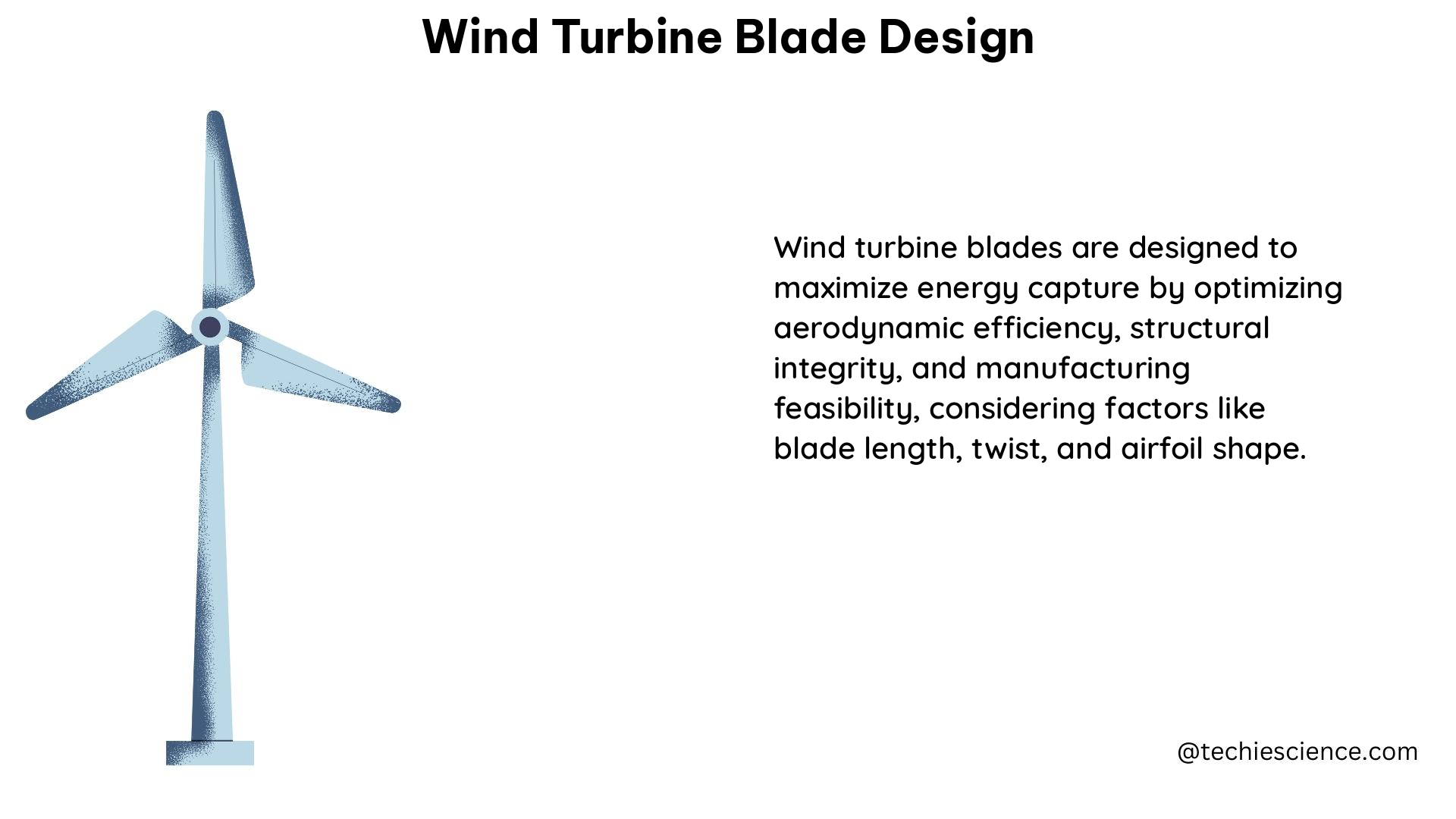Wind turbine blade design is a critical aspect of wind energy technology, as the blades are responsible for capturing the kinetic energy of the wind and converting it into mechanical energy. The design of wind turbine blades involves a complex interplay of aerodynamics, materials science, and structural engineering, with a focus on maximizing energy output while minimizing costs and environmental impact.
Blade Length and Energy Output
One of the key factors in wind turbine blade design is the length of the blades. Over time, the average length of wind turbine blades has been increasing, with longer blades leading to higher energy output due to the length-squared impact. For example, the aerodynamic performance of a length-optimized blade design for a 20 MW offshore wind turbine has been evaluated and quantified, showing a significant increase in energy capture compared to shorter blade designs.
According to the NREL Annual Technology Baseline, the average blade length for a 5 MW offshore wind turbine has increased from around 60 meters in 2010 to over 80 meters in 2020, with a projected further increase to over 100 meters by 2030. This trend is driven by the need to capture more wind energy and maximize the efficiency of wind turbine systems.
Aerodynamic Design and Optimization

The design process for wind turbine blades involves the use of computational fluid dynamics (CFD) codes, such as WindSE, to simulate wind turbine or wind farm performance, optimize designs, and quantify uncertainty. These CFD models take into account the complex aerodynamic interactions between the blades, the tower, and the surrounding wind flow, allowing designers to fine-tune the blade shape and profile to maximize energy capture.
One key aspect of aerodynamic design is the use of airfoil shapes that are optimized for the specific operating conditions of the wind turbine. For example, the NREL S-series airfoils have been specifically designed for wind turbine applications and have been widely adopted in the industry. These airfoils are characterized by their high lift-to-drag ratios, which are essential for efficient energy capture.
Structural Design and Materials
In addition to aerodynamic considerations, the structural design of wind turbine blades is also critical. Blades must be able to withstand the significant loads and stresses imposed by the wind, as well as the weight of the blade itself. This requires the use of advanced materials and structural engineering techniques.
Common materials used in wind turbine blade construction include fiberglass-reinforced composites, carbon fiber-reinforced composites, and hybrid materials that combine different reinforcement fibers. The choice of materials is based on a careful balance of factors such as strength, stiffness, weight, and cost.
Structural design optimization techniques, such as finite element analysis (FEA), are used to ensure that the blade design can withstand the expected loads and stresses throughout its lifetime. This includes considering factors such as fatigue, buckling, and impact resistance.
Manufacturing and Cost Optimization
The manufacturing process for wind turbine blades is also a critical aspect of the design process. A design-driven wind blade manufacturing model has been developed to identify opportunities to reduce wind blade costs. This model includes the calculation of labor man-hours, which are used to generate four types of labor costs: direct, scrap, consumable, and indirect.
Cost modeling is further developed for materials, overheads, and business operations, and integrated into a techno-economic model that can generate cash flows over multiple years to determine the return on investment for changes in blade designs and manufacturing processes. This allows designers to optimize the blade design and manufacturing process to minimize costs while maintaining high performance.
Wind Farm Optimization
The design of wind turbine blades can also be optimized to enhance energy capture in turbine arrays. A novel idea to design wind turbine blades from a wind farm perspective has achieved over 5% increase in energy capture with farm-optimized turbine designs.
This approach takes into account the complex interactions between individual turbines within a wind farm, including wake effects and turbulence. By designing the blades to work in harmony with the overall wind farm layout and conditions, it is possible to significantly improve the energy output of the entire system.
Conclusion
Wind turbine blade design is a complex and multifaceted field that requires a deep understanding of aerodynamics, materials science, structural engineering, and manufacturing processes. By leveraging the latest computational tools, advanced materials, and optimization techniques, designers can create blades that are highly efficient, cost-effective, and environmentally friendly.
As the demand for renewable energy continues to grow, the importance of wind turbine blade design will only increase. By staying at the forefront of this rapidly evolving field, engineers and researchers can play a crucial role in the transition to a sustainable energy future.
References
- Design and optimisation of a 20 MW offshore wind turbine blade. ScienceDirect. https://www.sciencedirect.com/science/article/pii/S0029801824013131
- Wind Data and Tools | Wind Research – NREL. National Renewable Energy Laboratory. https://www.nrel.gov/wind/data-tools.html
- A design-driven wind blade manufacturing model to identify opportunities to reduce wind blade costs. ScienceDirect. https://www.sciencedirect.com/science/article/pii/S0960148123008510
- Blade design and performance analysis of wind turbine. ResearchGate. https://www.researchgate.net/publication/298558629_Blade_design_and_performance_analysis_of_wind_turbine
- Designing wind turbine rotor blades to enhance energy capture in turbine arrays. ScienceDirect. https://www.sciencedirect.com/science/article/abs/pii/S0960148119316507

The lambdageeks.com Core SME Team is a group of experienced subject matter experts from diverse scientific and technical fields including Physics, Chemistry, Technology,Electronics & Electrical Engineering, Automotive, Mechanical Engineering. Our team collaborates to create high-quality, well-researched articles on a wide range of science and technology topics for the lambdageeks.com website.
All Our Senior SME are having more than 7 Years of experience in the respective fields . They are either Working Industry Professionals or assocaited With different Universities. Refer Our Authors Page to get to know About our Core SMEs.